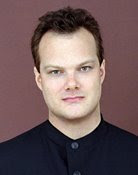In Memorium, Conductor And Humanist Richard Hickox

We must redouble our efforts ...
Symphonies for chorus and orchestra
Works are listed in chronological order. Works with an asterisk (*) indicate that text is used throughout the entire composition.
Symphony No. 9 in D minor, opus 125, by Ludwig van Beethoven (1824)
Roméo et Juliette, opus 17, by Hector Berlioz (1835)
Symphony No. 2 in B-flat major, opus 52, Lobgesang, by Felix Mendelssohn (1840)
Faust Symphony, by Franz Liszt (1854)
Dante Symphony, by Franz Liszt (1856)
Kullervo, opus 7, by Jean Sibelius (1892)
Symphony No. 2 in C minor, Resurrection, by Gustav Mahler (1894)
Symphony No. 3 in D minor, by Gustav Mahler (1896)
Symphony No. 1 in E major, opus 26, by Alexander Scriabin (1900)
Symphony No. 3, by Joseph Guy Ropartz (1905)
Symphony No. 8 in E-flat major, by Gustav Mahler (1907) *
A Sea Symphony (Symphony No. 1), by Ralph Vaughan Williams (1909) *
The Bells, opus 35, by Sergei Rachmaninoff (1913) *
Symphony No. 4, by Charles Ives (1916)
Symphony No. 3, opus 27, Song of the Night, by Karol Szymanowski (1916)
A Symphony: New England Holidays, by Charles Ives (1919)
Symphony No. 3 in C major, opus 21, by George Enescu (1921)
First Choral Symphony, by Gustav Holst (1924)
Symphony No. 1 in D minor, Gothic, by Havergal Brian (1927)
Symphony No. 2 in B major, opus 14, To October, by Dmitri Shostakovich (1927)
Symphony No. 2, O Holy Lord, by Jan Maklakiewicz (1928)
Symphony No. 3 in E-flat major, opus 20, The First of May, by Dmitri Shostakovich (1929)
Morning Heroes, by Arthur Bliss (1930) *
Symphony of Psalms, by Igor Stravinsky (1930) *
Symphony No. 4, Das Siegeslied, by Havergal Brian (1933) *
Symphony No. 3, The Muses, by Cyril Scott (1937)
Symphony No. 4, Folksong Symphony, by Roy Harris (1940)
Symphony No. 4, The Revelation of Saint John, by Hilding Rosenberg (1940)
Symphony No. 6, by Erwin Schulhoff (1940)
Den judiska sången, by Moses Pergament (1944)
Symphony No. 6, In Memoriam, by Alexandre Tansman (1944)
Symphony No. 5, The Keeper of the Garden, by Hilding Rosenberg (1945)
Odysseus (Symphony No. 2), by Cecil Armstrong Gibbs (first performed 1946)
Symphony No. 3, Te Deum, by Darius Milhaud (1946)
Spring Symphony, by Benjamin Britten (1947) *
Symphony No. 5, by Dimitrie Cuclin (1947)
Symphony No. 4, The Cycle, by Peter Mennin (1948)
Symphony No. 10, by Dimitrie Cuclin (1949)
Symphony No. 12, by Dimitrie Cuclin (1951)
Sinfonia Antartica (Symphony No. 7), by Ralph Vaughan Williams (1952)
Symphony No. 9, opus 54, Sinfonia Visionaria, by Kurt Atterberg (1956) *
Deutsche Sinfonie, by Hanns Eisler (1957) *
Symphony No. 12, opus 188, Choral, by Alan Hovhaness (1960)
Symphony No. 13 in B-flat minor, opus 113, Babi Yar, by Dmitri Shostakovich (1962) *
Symphony No. 3, Kaddish, by Leonard Bernstein (1963)
Symphony No. 10, Abraham Lincoln, by Roy Harris (1965)
Vocal Symphony, by Ivana Loudová (1965)
Choral Symphony, by Jean Coulthard (1967)
Symphony No. 2, opus 31, Copernicus, by Henryk Górecki (1972) *
Symphony No. 9 (Sinfonia Sacra), opus 140, The Resurrection, by Edmund Rubbra (1972) *
Symphony No. 3, The Icy Mirror, by Malcolm Williamson (1972) *
Symphony No. 23, opus 273, Majnun, by Alan Hovhaness (1973)
Symphony No. 2, Sinfonia mistica, by Kenneth Leighton (1974)
Symphony No. 13, Bicentennial Symphony, by Roy Harris (1976)
Symphony No. 5, by Camargo Guarnieri (1977)
Symphony No. 7, A Sea Symphony, by Howard Hanson (1977) *
Sinfonia fidei, opus 95, by Alun Hoddinott (1977)
Symphony No. 2, Saint Florian, by Alfred Schnittke (1979)
Harmonium, by John Adams (1981) *
Symphony No. 3, Sinfonia da Requiem, by József Soproni (1983)
Symphony No. 6, Aphorisms, by Einar Englund (1984)
Symphony No. 4, by Alfred Schnittke (1984)
Symphony No. 58, Sinfonia Sacra, opus 389, by Alan Hovhaness (1985)
Symphony No. 2, by Erkki-Sven Tüür (1987)
The Dawn Is at Hand, by Malcolm Williamson (1987-89) *
Symphony No. 3, Journey without Distance, by Richard Danielpour (1989) *
Symphony No. 7, opus 116, The Keys of the Kingdom, by Jan Hanuš (1990)
Symphony No. 7, Seven Gates of Jerusalem, by Krzysztof Penderecki (1996)
Symphony No. 6, Choral, by Carl Vine (1996) *
Symphony No. 9, by Hans Werner Henze (1997) *
Symphony 1997: Heaven - Earth - Mankind, by Tan Dun (1997)
Symphony No. 5, Choral, by Philip Glass (1999) *
Symphony No. 4, The Gardens, by Ellen Taaffe Zwilich (1999)
Symphony No. 9, The Spirit of Time, by Robert Kyr (2000)
Symphony No. 7, Toltec, by Philip Glass (2005) *
Symphony No. 8, Songs of Transitoriness, by Krzysztof Penderecki (2005)
Source: Wikipedia Choral Symphony entry. With thanks.
Photo credit: (c) www.bach-cantatas.com. Copyright controlled. With thanks.


































